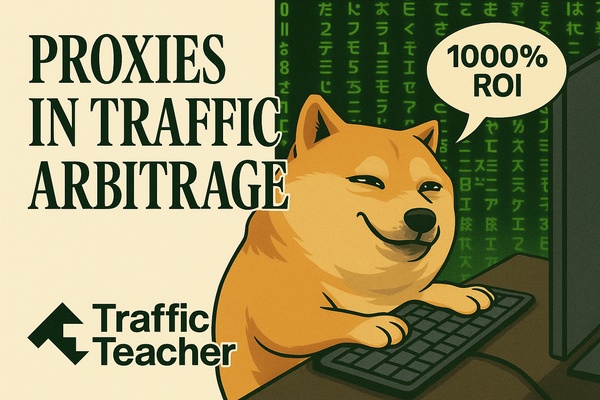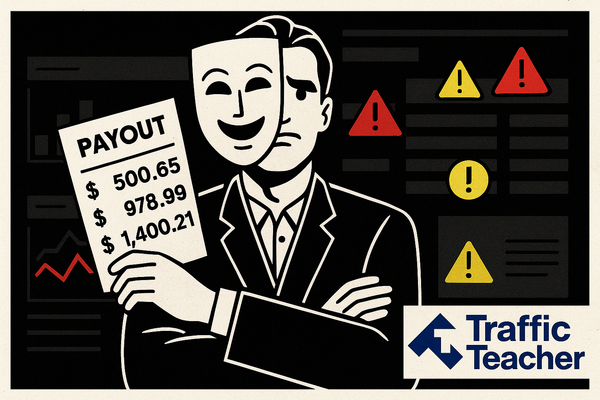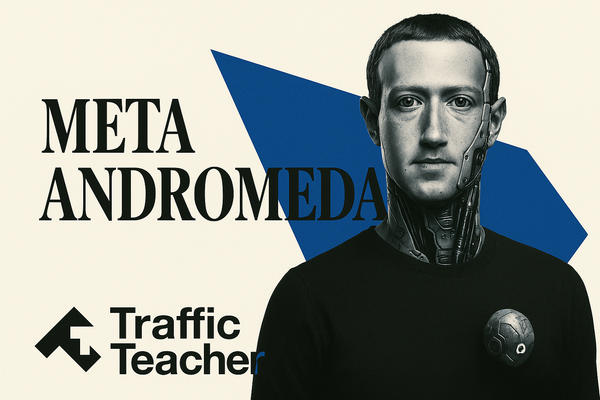Traffic Arbitrage 2025: How to Make Money from Online Casino Offers

If you’ve been on social media lately, you’ve probably seen those absurd ads where a cartoon chicken tries to cross the road for cash. That’s Chicken Road, one of the many crash-style casino games flooding feeds right now. You tap, the chicken runs, maybe it scoops some coins—and if it gets hit, your balance gets flattened instead.
Most people see these ads and scroll. But behind them hides an entire system making thousands a day off clicks just like yours.
What you just watched isn’t random marketing—it’s part of something called traffic arbitrage. In short, you buy cheap clicks from platforms like Facebook or TikTok and send that traffic to casino offers that pay per deposit. You’re not the player—you’re the middleman.
Traffic arbitrage is the process of buying traffic from one source (like Facebook) and sending it to an offer that pays per action, signup, or deposit. The goal is to spend less on clicks than you earn from conversions.
Casino companies pay big because they know the math: most players lose over time. Media buyers flip that equation by driving traffic efficiently, optimizing ads, and pocketing the margin.
In this post, I’ll break down how people actually make money doing this—what tools you need, what risks to expect, and why most beginners burn cash before they ever see profit. All backed by my own early mistakes.
How Traffic Arbitrage Works (Simple Breakdown)
At its core, traffic arbitrage is easy math: you buy cheap clicks and sell them higher. The funnel looks like this:
Ad Creative → Landing page | PWA → Offer → Conversion → Profit (if you didn’t screw up).
Core Terms (You’ll See These Everywhere)
Offer — the product or service you drive traffic to. That’s what pays you.
GEO — the country you’re targeting. Every GEO has different rules, payouts, and ad behavior.
FTD — first-time deposit; the main metric in iGaming, paid once a user deposits.
CR — conversion rate, the percentage of clicks that turn into actual actions.
ROI — return on investment, how much you earned or lost versus ad spend.
CPA / CPL / Revshare — payout models:
- CPA – fixed payout per deposit or action.
- CPL – payout per lead or registration.
- Revshare – you get a % of what the player loses over time.
The Niches You Can Run
Each vertical plays by its own rules:
- iGaming: high payouts (€40–200 CPA), tough restrictions, huge volume in LATAM and Eastern Europe.
- Dating: pays per signup, quick money, but full of bot traffic.
- Nutra: advertising supplements like dick enlargement pills or a cream against back pain, needs believable pre-landers, policy nightmare.
- Fintech: clean traffic, lower risk, solid payouts on loans/credit offers.
- Crypto: volatile, risky, high reward if you stay compliant.
- Adult: steady conversions, cheap traffic, no glory.
General rule: the harder it is to get traffic approved, the better the payout.
Tools & Setup to Start (Without Burning Money)
You don’t need a $10k budget or a degree in online marketing to start. You just need the right setup and the discipline not to skip steps.
1. Traffic Source
Pick one. Not three. One.
Each platform has its own logic, bans, and learning curve.
- Meta / TikTok: best for scale, but strict with casino and crypto vertical.
- Push / Pop networks (PropellerAds, RichAds): easier entry, cheaper clicks, lower intent.
- Google: stable, but a nightmare for restricted verticals.
I am gonna only focus on FB. Maybe if I have the time i will focus on trying out the others but I can tell you that you cant go wrong with Meta to start.
Anti-Detect Browsers (Why they matter)
If you run restricted verticals (iGaming, crypto, adult) or manage multiple ad accounts, platforms fingerprint everything — device, fonts, timezone, cookies. Get caught reusing one setup and you’re banned before your coffee cools.
Anti-detect browsers create isolated profiles, each with a unique fingerprint. That way, every campaign looks like it’s being run from a different human.
Popular choices:
- Dolphin Anty – great interface, solid pricing, and the first five profiles are free. It’s also one of the most common picks for beginners in traffic arbitrage (myself included).
👉 Get 15% off your first month here - Multilogin
- AdsPower
- Vision
The workflow stays the same: one profile = one account, paired with a residential or mobile proxy.
Proxies & SOCKS5 — the basics (stop using public Wi-Fi like an amateur)
Why proxies matter: platforms link conversions and accounts to IPs. Use the wrong IPs and the platform will treat you like a spam ring. Proxies let you match IP to the browser fingerprint and GEO so each profile looks like a real human.
Types of proxies
- Residential proxies — IPs assigned to real home ISPs.
Pros: highest success rates for risky verticals, less flagged.
Cons: pricey.
Use when: running iGaming, crypto, adult in Tier-2/Tier-3 GEOs where fraud checks are strict. - Mobile proxies — IPs assigned to mobile carriers.
Pros: best for mobile-looking traffic, great for app-like funnels and mobile GEO matching.
Cons: most expensive, limited concurrency.
Use when: you need maximum legitimacy on mobile flows. - Datacenter proxies — servers in data centers (cheap).
Pros: cheap, fast for testing.
Cons: easy to detect and flag.
Use when: Stick to the both two mentioned.
SOCKS5 vs HTTP(S)
- SOCKS5: lower-level proxy protocol. Works with more apps, supports UDP, typically better for automation and anti-detect browsers.
- HTTP(S): standard web proxy for browsers. Easier to use but slightly more detectable in some setups.
For anti-detect setups, SOCKS5 + residential/mobile IPs is the combo most media buyers prefer. It plays nicer with browser profiles and gives you better isolation.
Providers & sourcing
Look for providers with:
- explicit SOCKS5 support,
- geo filtering by city,
- stable uptime,
- whitelist/port options,
- decent support and trial options.
If you want a full technical breakdown of proxy types, SOCKS5 setups, and my go-to providers, I’ve written a separate deep-dive:
👉 Proxy Setup for Traffic Arbitrage – The Complete Guide
Tracker
This is your control room. It tells you which ad, country, and device actually made money.
Use:
- Voluum (solid middle ground)
- Binom (self-hosted, cheaper long term)
- Keitaro (industry standard)
I use Keitaro and so does probably almost everybody in this niche.
Postback Integration
Postback connects your tracker with the partner network. It automatically sends conversion data (e.g., deposit, signup) back to your tracker.
Without postback, you’re blind — you can’t tell which ad actually made money.
3. Creative Spy Tools
Steal like an artist. Spy tools show you what other affiliates are running so you know what works and what doesnt.
These are the tools I use:
Free: Facebook Ad library with this chrome extension
- Tyver: – newer but built for Facebook and TikTok specifically, perfect for arbitrage angles and creatives in restricted verticals. Clean interface and pulls real ad data instead of fake scraped junk.
Find patterns, not clones. Use spy tools to understand why an angle works — then rebuild it in your own tone, layout, and GEO.
4. Facebook Account Setup
Two main ways to launch Facebook ads with low ban risk: rent agency accounts or build your own KING + personal ad accounts setup.
Option A — Rent an Agency Account (fast & safe)
You rent a warmed, verified BM/ad account from a reseller. These have spend history and lower ban rates.
- Fee: 3–10% of ad spend
- Min top-up: $100
- Example: $1,000 spend + 3% fee = $1,030 total
Pros: quick start, high trust
Cons: ongoing fees, limited control, risk if provider flagged
Option B — KING + Personal Accounts (DIY route)
A KING account is a trusted FB profile that can handle multiple ad accounts. Linked autoreg accounts ($1–2 each) are used to run ads.
KING cost: ~$7–10
What to check:
- Age (6+ months)
- Real activity & ad history
- No ad restrictions
You link autoregs to the KING, create a Business Manager (BM), and warm it gradually with low-risk ads.
Pros: full control, no fees
Cons: setup time, device/proxy hygiene required
BM Setup
BM ties pages, ad accounts, and pixels together. Verify it with real business details for higher trust and fewer bans.
Quick Tips
- Warm Autoreg for 2 weeks before scaling
- One admin = one clean device/profile + proxy
- One Debit Card can be used up to 10 ad accounts
- Log all IDs, proxies, and payments
- Avoid low quality autoregs
A Good Partner Program
Your partner program (affiliate network) is where your offers come from — the place you’ll pour traffic into and (hopefully) get paid from.
Depending on your niche, that could mean a casino, a supplement, or a dating site.
I started with iGaming — huge payouts, high volatility, and constant ad bans. It pays well if you can survive the grey zone.
What Makes a Good Partner Program
A solid partner program is the backbone of every arbitrage setup. Look for:
- Consistent payouts: weekly or bi-weekly, on time.
- Fast support: affiliate managers who actually reply on Telegram.
- Wide GEO coverage: multiple regions and verticals to pivot fast.
- Transparent tracking: real-time stats for clicks, FTDs, and deposits.
- No shaving: every valid conversion should show up — if you’re losing 20–30% mysteriously, switch networks.
- Flexible payments: crypto, Capitalist, Wise, bank wire, etc.
- Private offers: exclusive deals once you bring stable traffic.
- Fair compliance: they warn before banning, not after.
- Useful resources: pre-landers, creatives, APIs, postback integrations.
Red Flags
- Delayed payments or “manual review” every week.
- Affiliate managers who ghost you mid-chat.
- Sudden rule changes right before payday.
- Reports that feel too pretty — real networks show ugly numbers too.
Examples of Reliable Networks (Beginner-Friendly)
Finding a good partner program as a beginner is half the battle. Some networks welcome newcomers if you show basic competence and communicate clearly.
I started with Gambling.pro — one of the oldest, most reliable names in the iGaming niche. Solid tracking, fast managers, and consistent weekly payouts. From there, I branched into a few others worth mentioning:
- MonkeyTraff – beginner-friendly entry point, decent casino offers and quick Telegram support.
- CPA.Scanner – transparent dashboard, honest stats, and responsive managers who actually guide you through early setups.
- LeadGenerals – my personal favorite; wide GEO selection, no shaving, and they pay on time.
Start with one or two networks. Build trust, send clean traffic, and communicate often. Once you’ve proven volume and quality, every manager suddenly replies faster and better.
Payments
Before you think you can just plug in your normal debit card and start running ads — think again.
You need VCCs (virtual credit cards) made specifically for media buying. They let you track spend per account, manage limits, and scale safely without touching your personal bank.
Sometimes Meta decides your card “doesn’t meet requirements” (translation: random decline for no reason). When that happens, you’ll need instant access to another working card — that’s where VCC services come in.
Good options:
- LaManche Payments – reliable, low decline rate, clean dashboard.
- PST.NET – popular in the arbitrage scene, great support.
- BroCards – simple setup, solid for Facebook and TikTok ads.
- ComboCards / AnyBill.io – newer, but good feedback on flexibility and fees.
Always have at least two providers ready. If one card dies mid-campaign, you don’t stop spending — you switch and keep printing.
3. Creatives
Creatives are one of the most important building blocks of being a successful media buyer.
If your creatives (or “creos,” as the Russians call them) are boring — no conversions for you, my friend.
It’s like TikTok: if the first three seconds don’t grab attention, you’re just another swipe in the feed.
1. Why Creatives Matter
People scroll through hundreds of ads daily. Your job is to make them stop for three seconds — long enough to trigger curiosity or emotion.
Good creatives don’t sell immediately; they interrupt boredom. Once you earn attention, the funnel takes care of the rest.
2. Spy Before You Create
Before designing anything, spy on what’s already working in your GEO.
Use tools like Tyver, Adplexity, or Anstrex to see what other affiliates are “pouring” traffic on.
Look for patterns, not clones — what emotion are they using? What angle makes people click?
Then rebuild it in your own tone, visuals, and structure.
3. UGC Is King Right Now
User-generated content (UGC) style ads dominate Facebook, TikTok, and native feeds because they don’t look like ads.
They feel organic — real people talking, unfiltered shots, phone-quality footage.
Big media-buying teams even hire UGC managers who source actors and editors 24/7 to keep creatives fresh.
Creative fatigue kills campaigns faster than bans do.
Once users recognize your ad, CTR drops, CPM rises, and you’re paying for dead impressions.
4. Keep Creatives in Rotation
Always test at least 3–5 active variations per offer.
Swap them every few days, adjust intros, change hooks, or re-edit existing footage.
Even a color change or new subtitle style can reset ad fatigue.
PWAs
In iGaming, traffic often flows not just to websites but to apps — mainly PWA and WebView formats. These setups help ads pass moderation and keep users engaged longer.
PWA (Progressive Web App) works like a website that behaves like an app. It installs straight from the browser, no App Store or Google Play needed. That means faster approval, fewer bans, and a higher chance users come back since the icon stays on their screen.
WebView apps are lightweight mobile apps that open your landing page inside an in-app browser. To the user, it looks like a native app — but it’s really your site inside a shell. They’re useful for compliance and can boost retention because users reopen them directly instead of through ads.
Cloaking (Optional, Advanced)
Cloaking hides your real landing page from ad-platform moderators by showing them a clean “white page,” while real users see the actual offer.
Use it only when your vertical requires it — like iGaming or crypto — to reduce bans and keep campaigns alive.
The simplest way to do this is through Keitaro filters. They let you send bots, moderators, or unwanted GEOs to a white page, and route real traffic to your converting lander.
Keep it clean: don’t fake documents or push scammy content. Cloaking is a tool, not a magic trick — abuse it and you’ll burn your accounts and your rep.
Final Thoughts
Traffic arbitrage isn’t magic. Think of it as a mix of affiliate marketing, CPA marketing, and a bit of IT — installing pixels, setting up trackers, managing proxies — blended with pure creativity for ad angles, landers, and PWAs.
You’ll spend your first few hundred euros buying data, not profit. That’s normal. If you stay disciplined, that data eventually becomes a system that prints money.
Learn the rules. Track the numbers. Don’t cry over bans. Keep testing.
That’s how people in this game actually make money.


